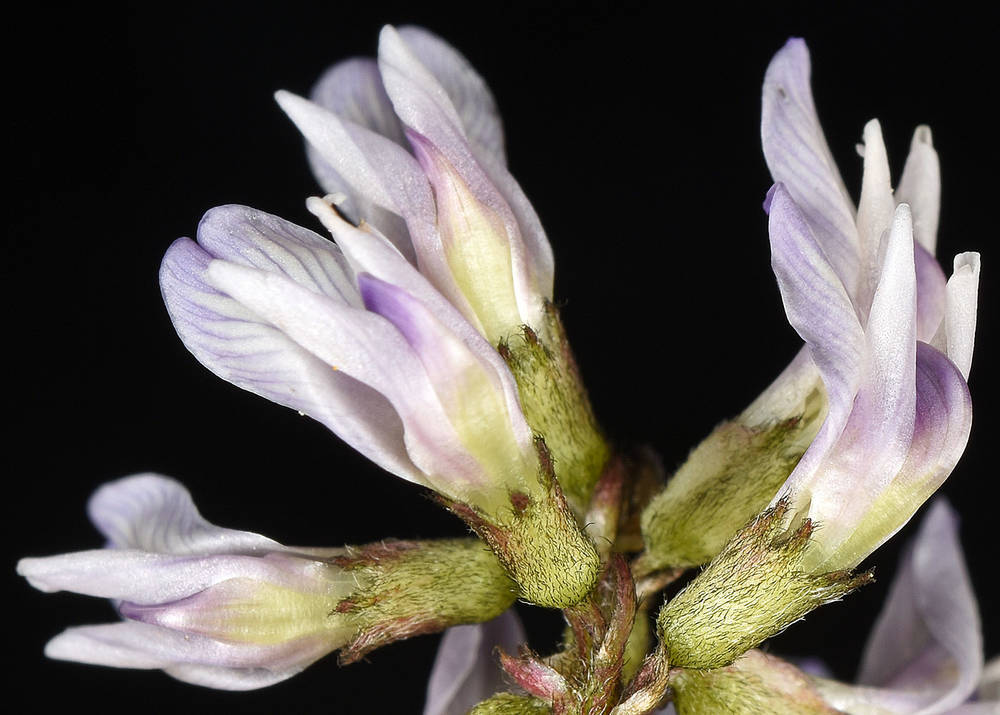
Plants perennial, caulescent, thinly to densely strigillose to pilose-villosulous, hairs basifixed.
Stems several, ascending, (10)15–45 cm.
Leaves 4–9.5 cm; leaflets 9–17, ovate to obovate or lance-elliptic, (3)5–12 × 4–8 mm, tips rounded, surfaces abaxially strigillose, adaxially glabrous; stipules 1.5–6 mm, at least lowermost connate-sheathing.
Inflorescences racemes (3)6–12-flowered; peduncles (6)8–21 cm; bracts 1–3.5 mm; pedicels 0.5–3 mm; bracteoles usually 0.
Flowers declined at anthesis; calyces 4–6.8 mm, strigillose with black hairs, tubes 3.2–4.5 mm, teeth subulate, 0.7–2.3 mm; corollas 6–9 mm, purplish; ovules 3–6.
Fruits unilocular, pendulous, broadly ellipsoid, flattened, not or scarcely sulcate dorsally, 8–13 × 3.7–5 mm, strigose with mostly black hairs; valves papery; stipes 1.2–2 mm.
Alpine streambanks and gravel bars. Flowering Jun–Aug. 1200–2700 m. BW. Native. Endemic to Oregon.
Astragalus robbinsii is widespread in western North America and disjunctly eastward to Labrador, Newfoundland, Nova Scotia, and New England. Eight varieties have been described; variety alpiniformis is the only one that occurs in Oregon, and it is also endemic to the state. Astragalus robbinsii var. alpiniformis can be confused with Astragalus alpinus var. alpinus as the two species are alike in habitat, growth form, flowers, and fruits, and also occur sympatrically. In A. robbinsii var. alpiniformis, the keel is shorter than the wings and much shorter than the banner, leaflet number is 9–17, and the pod is not or scarcely sulcate dorsally, whereas in A. alpinus var. alpinus, the keel is as long or longer than the wings and equals or is a little shorter than the banner, leaflet number is usually 15–25, and the pod is strongly sulcate dorsally.